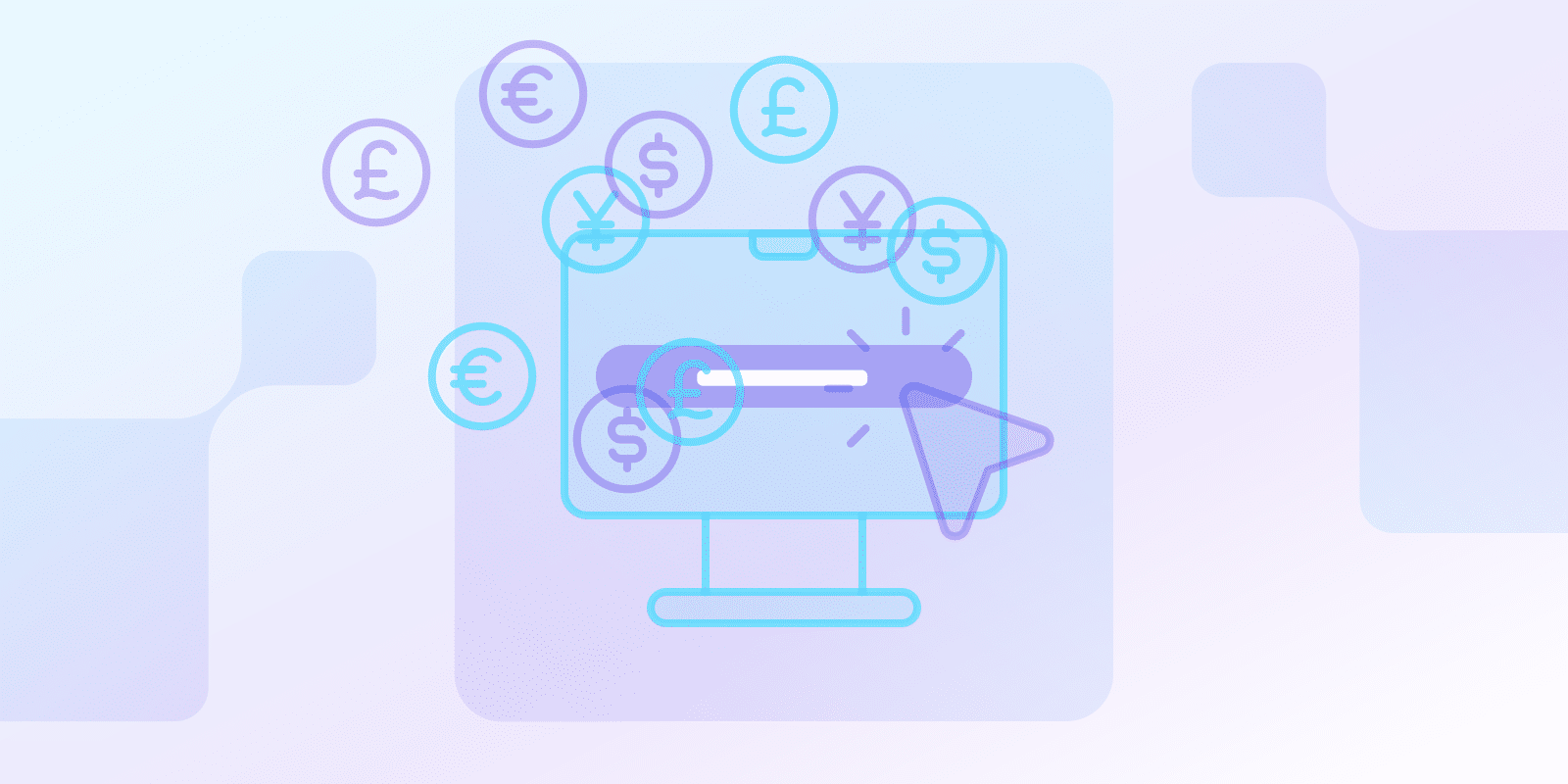SaaS 지표 및 KPI
PPC(Pay-Per-Click)란?

PPC(Pay-Per-Click)란?
PPC는 광고주가 광고를 통해 발생한 클릭당 비용을 지불하는 광고 방식입니다. 검색 엔진에서 상위 순위를 경쟁하고 다른 광고 사이트에 광고를 게재할 수 있으므로 검색 엔진 마케팅에 필수적인 도구입니다.
PPC에서 광고주는 한 번의 클릭에 대해 지불할 의향이 있는 최대 입찰가를 설정합니다. 이 금액은 경매를 통해 결정되며, CPC 경쟁 정도에 영향을 받습니다.
PPC 광고는 다양한 방식으로 유용하지만, 광고 관리에는 여러 단계가 포함됩니다.
PPC 캠페인의 유형, 고유한 목적, 고객 여정의 각 단계에서의 전략적 중요성은 무엇입니까?
PPC 광고 캠페인은 시장 침투에 도움이 되므로 모든 온라인 마케팅 전략의 중심에 있습니다. 총 5가지 유형의 PPC 광고 캠페인이 있으며, 각각 캠페인 내에서 매우 구체적인 목적과 전술적 필요성이 있습니다.
- 검색 광고: 이는 가장 일반적인 유형의 PPC 캠페인이며 검색 엔진 결과 페이지(SERP)에 나타납니다. 잠재 고객이 이미 귀사와 관련된 관련 제품 및 서비스를 찾고 있을 때 사이트 트래픽을 늘리기 위한 것입니다.
- 디스플레이 광고: 이는 특정 웹사이트나 애플리케이션에 있는 가상 광고 배너입니다. 브랜드 인지도를 만듭니다.
- 소셜 미디어 광고: 이러한 광고는 Facebook, Instagram, Twitter와 같은 소셜 미디어 사이트에 있습니다. 이를 통해 인구 통계 또는 제품과의 관련성에 따라 대상 청중을 파악하는 데 도움이 됩니다.
- 리마케팅 광고: 이는 이미 귀사 웹사이트를 방문했거나 귀사 브랜드와 교류한 사용자를 대상으로 합니다. 이는 사용자에게 귀사의 제안 사항을 상기시키고 사이트를 다시 방문하도록 설득하는 데 유용합니다.
- 쇼핑 광고: 이는 검색 결과와 Google 쇼핑에 광고된 제품에 나타납니다. 이는 전자 상거래 사업에서 제품 판매를 하는 데 완벽합니다.
| 기능 | 검색 광고 | 디스플레이 광고 | 소셜 미디어 광고 | 리마케팅 광고 | 쇼핑 광고 |
|---|---|---|---|---|---|
| 주요 목적 | |||||
| 주요 목표 | 검색 결과에서 타겟 트래픽 유도 | 브랜드 인지도 구축 | 특정 인구 통계학적 대상에게 도달 | 이전 방문자 재참여 유도 | 제품 판매 증대 |
| 고객 여정 단계 | |||||
| 타겟팅 단계 | 적극적인 검색/고려 | 인지/발견 | 관심/고려 | 고려/결정 | 구매 의도 |
| 게재 위치 특징 | |||||
| 표시 위치 | 검색 엔진 결과 페이지 | 타사 웹사이트 및 앱 | 소셜 미디어 플랫폼 | 다양한 웹사이트에 걸쳐 | 검색 결과 및 쇼핑 섹션 |
규모나 산업에 관계없이 모든 비즈니스가 PPC 광고를 사용하여 이익을 얻을 수 있습니까?
예, PPC 광고 전략은 모든 규모의 회사와 모든 산업 분야에서 효과적이어야 합니다.
PPC는 회사가 다양한 시장과 지역의 다양한 잠재 고객과 소통할 수 있도록 해주는 효과적인 도구입니다. 전자상거래, 의료, 금융, 교육 등을 포함한 회사는 PPC를 효과적으로 활용하여 마케팅 요구 사항을 충족했습니다.
PPC 광고는 어떻게 작동합니까?
PPC는 입찰을 통해 달성되는 온라인 광고 전략입니다. 마케터는 시장이 제공하는 것과 가장 관련성이 높은 키워드를 나열하여 잠재 고객을 검색합니다.
사용자가 처음 선택한 키워드에 해당하는 용어를 검색하면 해당 광고가 검색 결과 상단에 게재됩니다. 가장 높은 입찰가를 제시한 광고가 먼저 게재됩니다.
클릭당 비용(CPC)은 광고주가 광고를 클릭할 때마다 발생하는 비용으로, 입찰의 일반적인 가치, 품질 점수, 키워드에 대한 경쟁 등의 요인에 영향을 받습니다.
클릭당 지불(PPC) 광고의 장점과 단점은 무엇입니까?
PPC 광고에는 장점과 단점이 모두 있습니다.
장점:
- 단기 이득: PPC 광고 캠페인은 결과를 얻는 데 시간이 오래 걸리는 SEO 마케팅과 달리 즉각적인 트래픽과 리드를 제공합니다.
- 쉬운 타게팅: PPC는 마케터가 목표로 삼을 수 있도록 허용합니다. 특정 그룹, 행동 및 관심사를 통해 광고를 간소화합니다.
- 비용 효율성: 광고를 클릭한 경우에만 비용을 지불하며, 그렇지 않은 경우 예산에 영향을 미치지 않습니다.
- 정량화 가능한 성공: 전환 횟수와 같은 요인을 고려하여 획득 비용 캠페인의 성공 여부와 최적화 방법을 나타냅니다.
단점:
- 높은 경쟁: 입찰 전쟁으로 인해 비용이 상승하고, 심지어 노출과 저렴한 가격도 보장되지 않습니다.
- 클릭 사기: 사기꾼은 또한 링크나 광고에 대한 가짜 클릭을 담당하여 과도한 지출을 초래할 수 있습니다.
- 광고 피로 위험: 광고는 대상 청중의 관심을 유지하기 위해 정기적으로 모니터링, 업데이트 또는 개선해야 합니다.
기업은 PPC 광고에 얼마를 지출해야 합니까?
기업이 PPC 광고에 지출해야 하는 금액은 목표, 사업 분야, 경쟁의 강도에 따라 결정됩니다.
그러나 평균 지출 범위는 월 $100에서 $10,000까지 다양하며, 평균 클릭당 비용(CPC)은 $1-$3입니다.
PPC 광고의 시작 예산은 일반적으로 500~1,000달러입니다.
작게 시작하여 지원이 진행됨에 따라 광고 예산을 점진적으로 늘리는 것이 좋습니다.
PPC 캠페인의 성공을 효과적으로 측정하는 방법은 무엇입니까?
PPC 캠페인을 모니터링하는 것은 매우 중요하며, 클릭률(CTR), 클릭당 비용(CPC)과 같은 지표를 철저히 평가해야 합니다. 전환율그리고 노출 횟수를 공유합니다.
이러한 지표는 가시성, 예산 참여 수준, 캠페인 수익 측면에서 광고 성과를 나타냅니다.
결론
PPC 또는 클릭당 지불 광고는 모든 산업과 규모의 기업이 사용하는 가장 일반적인 디지털 광고 전략 중 하나입니다.
PPC 캠페인의 성공에 중요한 것은 통합되고 명확하게 정의된 목표, 정확한 대상 청중 타게팅, 심층적인 키워드 발견, 캠페인의 효과적이고 정기적인 관리입니다. PPC 광고 전략을 적절하게 관리하면 기업은 웹사이트에 적합한 방문자를 유치하고 가시성을 높이며 궁극적으로 마케팅 목표를 달성할 수 있습니다.